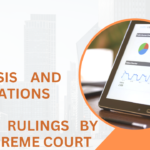Purchasing insurance involves many unfamiliar terms that can confuse consumers. Premium is one such term frequently used but often misunderstood. Being well-versed in what premiums are, how they are calculated, and strategies to minimize them allows you to make smarter insurance decisions and keep more money in your pocket. This guide provides a primer on the essential concept of insurance premiums.
Thank you for reading this post, don't forget to subscribe!What are Insurance Premiums?
An insurance premium is the amount you pay for an insurance policy that provides coverage for a specific period of time, typically 12 months. Premiums are the largest component of insurance costs, so understanding them is key to budgeting for policies and comparing insurance options.
In simple terms, your premium is the insurer’s fee to take on the financial risk of providing compensation if you file a claim covered by the policy. You “pre-pay” this fee upfront when you purchase coverage so the insurer has the funds to pay out if you experience a loss.
Premiums are normally paid monthly, quarterly or annually. Paying in full annually often earns a discount compared to monthly installments.
What Factors Determine Your Insurance Premiums?
Insurers use sophisticated data analysis and risk assessment frameworks to calculate premiums for each policyholder. While the exact algorithms are proprietary, key characteristics that generally raise or lower your premiums include:
Personal Factors
- Age – Young and elderly drivers face higher auto premiums
- Gender – Men often pay more for life insurance
- Marital status – Married couples get discounts for combined policies
- Credit score – Better scores mean lower premiums
- Professional occupation – Higher risk jobs increase premiums
Property Factors
- Home/vehicle value – More valuable assets mean higher premiums
- Home/vehicle age – Newer properties cost more to insure
- Location – High-risk flood/fire zones increase premiums
Policy Factors
- Coverage types – Comprehensive policies cost more than basic liability
- Coverage limits – Higher caps mean higher premiums
- Deductibles – Choosing higher deductibles reduces premiums
- Duration – Longer policy terms can earn discounts
- Claims history – Frequent past claims drive up your premium
Insurers crunch all this data to project your level of risk and losses expected. Lower risk earns lower premiums, while higher risk equals higher premiums.
Major Types of Insurance Premiums
While all premiums represent pre-payment for potential claims, different types of premium structures exist:
Regular Premiums
The most common type, paid on a fixed schedule over the policy period. Rates stay constant unless changes are made at renewal. Ideal for stability and budgeting.
Single Premiums
A lump sum single payment covering the full policy period, most common for life insurance. Earns discounts but requires large upfront payment.
Flexible or Adjustable Premiums
Allow policyholders to vary when and how much they pay, within limits set by the insurer. Provides flexibility but less predictability.
Level Premiums
Premiums start higher when risk is highest, then decrease over time as risk declines. Common for mortgages and loans linked to insurance.
Pay-as-you-go Premiums
Premiums are based on actual usage or exposure. Common for health insurance with premiums per doctor visit or life insurance charging per mile driven.
Understanding these premium structures helps you select the payment schedule that best fits your budget and needs.
Strategies to Reduce Your Insurance Premiums
While risk factors largely dictate your premiums, strategic moves can earn discounts and minimize costs:
- Raise your deductible – Choose a higher amount you pay out-of-pocket before insurance kicks in. This reduces risk for the insurer.
- Improve credit score – Many insurers factor in your credit as an indicator of responsibility. Monitoring your score can yield big savings.
- Bundle policies – Purchasing multiple policies like home and auto from the same insurer earns multi-policy discounts.
- Enhance home/vehicle safety – Adding safety features like alarm systems and anti-theft devices prove you are lower risk.
- Drop unnecessary coverage – Review policy line by line to identify any superfluous extras to cut.
- Compare insurers – Don’t automatically renew. Regularly compare quotes to find insurers offering lower rates.
- Ask about discounts – Inquire about any discounts for your occupation, degree, security system, or policy tenure.
- Maintain continuous coverage – Lapses in insurance history increase risk perception and premiums.
- Pay annually – Opting for annual premiums in full saves over monthly installments.
Premium Payment Problems to Avoid
Certain missteps when paying premiums can put your policy at risk:
- Paying late – This can result in lapsed coverage or even policy cancellation. Set up automated payments to avoid lateness.
- Paying incomplete amounts – Insurers may return partial payments, so verify policy costs and that full payment is submitted.
- Paying without proper identification – Insure your account number, etc is on the payment so it gets applied properly.
- Paying to a wrong address – Double check payment mailing address or electronic transfer details to avoid misdirected premiums.
Catching up lapsed payments quickly and maintaining open communication with your insurer prevents losing coverage over avoidable premium issues.
Frequently Asked Questions
Can I get insurance without paying premiums upfront?
Some life insurance offers premium-free coverage, but most policies require pre-paying premiums to secure coverage.
Will my premiums increase after filing a claim?
Possibly, especially if multiple claims are filed in a short period. Insurers see frequent claims as higher risk.
Can I deduct insurance premiums on my taxes?
Yes, premiums for health, home, auto and some life insurance qualify as tax-deductible expenses, with some limitations.
How do I know if I’m overpaying for premiums?
Shopping around with multiple insurers ensures you get competitive market rates. An independent insurance broker can also analyze if you are overpaying.
Key Takeaways
- Insurance premiums pre-pay for potential covered losses by reimbursing the insurer providing protection.
- Premiums are calculated based on risk factors like your demographics, assets, insurance choices and claims history.
- Strategic moves like raising deductibles, bundling policies and maintaining good credit help reduce premium costs.
- Avoiding lapses, late payments and misdirected payments prevents coverage issues.










